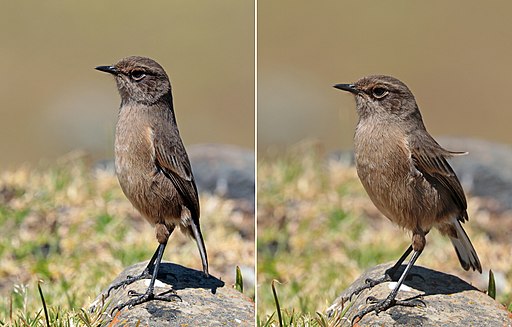Superregnum: Eukaryota
Cladus: Unikonta
Cladus: Opisthokonta
Cladus: Holozoa
Regnum: Animalia
Subregnum: Eumetazoa
Cladus: Bilateria
Cladus: Nephrozoa
Superphylum: Deuterostomia
Phylum: Chordata
Subphylum: Vertebrata
Infraphylum: Gnathostomata
Megaclassis: Osteichthyes
Cladus: Sarcopterygii
Cladus: Rhipidistia
Cladus: Tetrapodomorpha
Cladus: Eotetrapodiformes
Cladus: Elpistostegalia
Superclassis: Tetrapoda
Cladus: Reptiliomorpha
Cladus: Amniota
Classis: Reptilia
Cladus: Eureptilia
Cladus: Romeriida
Subclassis: Diapsida
Cladus: Sauria
Infraclassis: Archosauromorpha
Cladus: Crurotarsi
Divisio: Archosauria
Cladus: Avemetatarsalia
Cladus: Ornithodira
Subtaxon: Dinosauromorpha
Cladus: Dinosauriformes
Cladus: Dracohors
Cladus: Dinosauria
Ordo: Saurischia
Cladus: Eusaurischia
Subordo: Theropoda
Cladus: Neotheropoda
Cladus: Averostra
Cladus: Tetanurae
Cladus: Avetheropoda
Cladus: Coelurosauria
Cladus: Tyrannoraptora
Cladus: Maniraptoromorpha
Cladus: Maniraptoriformes
Cladus: Maniraptora
Cladus: Pennaraptora
Cladus: Paraves
Cladus: Eumaniraptora
Cladus: Avialae
Infraclassis: Aves
Cladus: Euavialae
Cladus: Avebrevicauda
Cladus: Pygostylia
Cladus: Ornithothoraces
Cladus: Ornithuromorpha
Cladus: Carinatae
Parvclassis: Neornithes
Cohors: Neognathae
Cladus: Neoaves
Cladus: Telluraves
Cladus: Australaves
Ordo: Passeriformes
Subordo: Passeri
Infraordo: Passerida
Superfamilia: Muscicapoidea
Familia: Muscicapidae
Genus: Pinarochroa
Species: Pinarochroa sordida
Subspecies: P. s. ernesti – P. s. hypospodia – P. s. olimotiensis – P. s. sordida
Name
Pinarochroa sordida (Rüppell, 1837)
Synonyms
Saxicola sordida (protonym)
Cercomela sordida
Oenanthe sordida
References
Neue Wirbelthiere zu der Fauna von Abyssinien gehörig, entdeckt und beschrieben von Dr. Eduard Rüppell. Vögel. p.75 pl.26 fig.2
Vernacular names
Deutsch: Almenschmätzer
English: Moorland chat
Esperanto: Kenja cerkomelo
español: Colinegro Abisinio
français: Traquet afroalpin
The moorland chat (Pinarochroa sordida), also known as the alpine chat or hill chat, is a species of songbird in the Old World flycatcher family. It is endemic to north-east Africa where it is common in its habitat. It lives at high altitudes on moors and grassland, usually above 3,400 m (11,100 ft), but can live as low as 2,100 m (6,900 ft).[2] It has a short tail and long legs. It is bold and will approach people.
The chat was first discovered on Mount Elgon on the Uganda-Kenya border by Jackson. The English geographer Halford Mackinder brought back the same bird from Mount Kenya in 1899.[3] He presented a paper on the first ascent to the Royal Geographical Society in 1900. The scientific results of his expedition were discussed in detail afterwards.
A very curious little bird was found by Mr Jackson on Mount Elgon at a height of 11,000 feet, and I remember saying to Mr. Mackinder that he was bound to find the same sort of little chat on Mount Kenya, at a height of 11,000 feet. This he did, and it was the same species as the Mount Elgon bird, an ordinary-looking little brown chat, with a good deal of white in the tail.
— Dr Bowdler Sharpe, A Journey to the Summit of Mount Kenya, British East Africa: Discussion[3]
The moorland chat was usually placed in the genus Cercomela, but molecular phylogenetic studies published in 2010 and 2012 found that the species was not closely related to birds in Cercomela or to birds in the closely related genus Oenanthe.[4][5] The moorland chat was therefore assigned to its own monotypic genus Pinarochroa which had been introduced by the Swedish zoologist Carl Jakob Sundevall in 1872.[6][7][8] The genus name Pinarochroa is derived from the Greek word pinaros meaning "dirty" and khroos, khroas meaning "coloured". The specific epithet sordida is from the Latin sordidus meaning "shabby" or "dirty".[9]
Taxonomy
There are a number of recognised subspecies:
P. s. sordida High altitude moorlands of Ethiopia
P. s. ernesti North Kenya (Mt. Kenya and Aberdare Mountains)
P. s. rudolfi North Kenya (Mt. Elgon moorlands) and adjacent East Uganda
P. s. olimotiensis High altitude moorlands of North Tanzania (Crater Highlands)
References
BirdLife International (2016). "Pinarochroa sordida". IUCN Red List of Threatened Species. 2016: e.T22710389A94244854. doi:10.2305/IUCN.UK.2016-3.RLTS.T22710389A94244854.en. Retrieved 12 November 2021.
Birds of Africa south of the Sahara, Ian Sinclair and Peter Ryan (2003) Struik ISBN 1-86872-857-9
Mackinder, H.J.; et al. (1900). "A journey to the summit of Mount Kenya, British East Africa: Discussion". The Geographical Journal. 15 (5): 453–486 [479]. doi:10.2307/1774261. JSTOR 1774261.
Outlaw, R.K.; Voelker, G.; Bowie, R.C.K. (2010). "Shall we chat? Evolutionary relationships in the genus Cercomela (Muscicapidae) and its relation to Oenanthe reveals extensive polyphyly among chats distributed in Africa, India and the Palearctic". Molecular Phylogenetics and Evolution. 55 (1): 284–292. doi:10.1016/j.ympev.2009.09.023. PMID 19772925.
Aliabadian, M.; Kaboli, M.; Förschler, M.I.; Nijman, V.; Chamani, A.; Tillier, A.; Prodon, R.; Pasquet, E.; Ericson, P.G.P.; Zuccon, D. (2012). "Convergent evolution of morphological and ecological traits in the open-habitat chat complex (Aves, Muscicapidae: Saxicolinae)". Molecular Phylogenetics and Evolution. 65 (1): 35–45. doi:10.1016/j.ympev.2012.05.011. PMID 22634240.
Gill, Frank; Donsker, David, eds. (2016). "Chats, Old World flycatchers". World Bird List Version 6.2. International Ornithologists' Union. Retrieved 20 May 2016.
Clement, Peter; Rose, Chris (2015). Helm Identification Guides: Robins and Chats. London: Christopher Helm. p. 632. ISBN 978-1-4081-5597-4.
Sundevall, Carl Jakob (1872). Methodi naturalis avium disponendarum tentamen: försök till fogelklassens naturenliga uppställnung (in Swedish, French, and Latin). Vol. 1. Stockholm: Samson & Wallin. p. 4.
Jobling, James A. (2010). The Helm Dictionary of Scientific Bird Names. London: Christopher Helm. pp. 307, 360. ISBN 978-1-4081-2501-4.
Retrieved from "http://en.wikipedia.org/"
All text is available under the terms of the GNU Free Documentation License


